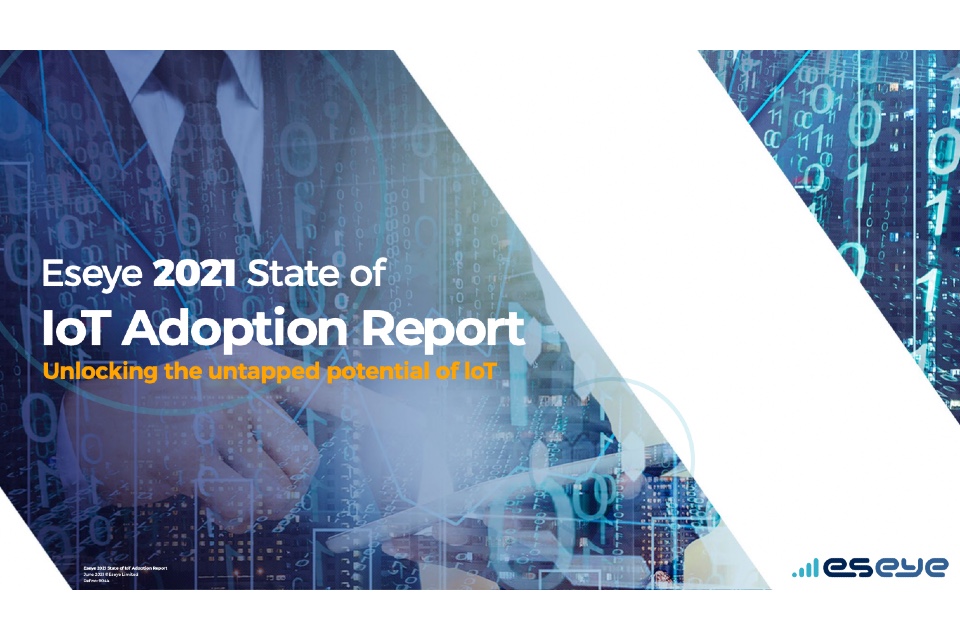By Derek Bryan, VP EMEA at Verizon Connect
Supply chains are constantly battling challenges, with unforeseen delays, restrictions and thefts causing disruption at every turn. More recently, the pandemic threatened the continuity of supply chains more severely than any event in recent memory. Lockdowns imposed across Europe and the rest of the world in response have caused disruption to the flow of goods, people, and transport drastically – with no indication of when its effects might fully subside.
The industry requires a smart solution, and the Internet of Things (IoT) could provide us with some of the answers. From temperature gauges, to in-vehicle sensor technology, to vehicle condition monitoring, the number of internet-connected devices in this sector will continue to grow, offering a ream of benefits to drivers navigating supply chain uncertainty going forward.
According to the Verizon Business 2020 Data Breaches Investigation Report (DBIR), IT misconfiguration was responsible for the largest number of cybersecurity vulnerabilities in the transport and logistics sector. This is one of a variety of factors preventing a confident uptake of IoT across the sector, meaning drivers are losing out.
With this in mind, how can we reconcile the expanding landscape of IoT vulnerabilities with its potential benefits? And moreover, as restrictions on mobility and economic disruption continue to be top of mind, how can businesses gain ROI from IoT in the medium and long term?
Shoring up the supply chain – the benefits of IoT
First and foremost, we must establish how IoT helps logistics businesses shore up their pipelines.
IoT devices can include anything from asset monitoring sensors within vehicles to assess the condition and temperature of cargo, to external sensors alerting drivers of the proximity of other vehicles, to the condition of the engine, to driver seats being occupied and doors/windows being opened or broken into. Additionally, AI dash cameras that allow fleet managers to review footage following a harsh driving event or accident are also becoming increasingly common within the sector.
Installing connected, smart technology on the ground provides logistics managers with a wealth of actionable data on, and visibility into, every step of the supply chain – allowing them to enhance operations in numerous ways. Using the data, drivers can be instructed to drive less aggressively or change how they load vehicles, for example, to ensure both they and their cargo arrive at their intended destination safely.
Managers can predictively pull vehicles out of operation if engine diagnosis data indicates a breakdown may be imminent. Drivers can pinpoint exactly when and where their vehicle was stolen or damaged to help expedite insurance claims. They can even provide supermarket customers with exact records of how long their produce has been stored for, and at what temperature, while in transit.
These closer and more accurate insights are particularly valuable to logistics businesses during times of disruption such as a pandemic or other global event. Agility, streamlined operations and vehicles and goods that communicate with each other help provide a more informed and consistent view of the supply chain, and in doing so help end users provide a more accurate and holistic picture to their customers.
Overcoming potential barriers to unleash full IoT potential
The benefits of installing IoT for logistics companies are numerous, but Verizon’s DBIR findings show that cybersecurity remains an issue for the industry. Other factors commonly cited as barriers to IoT adoption include a lack of integration between IoT and other digital technology across the supply chain, and cost.
A resulting lack of confidence is holding some companies back from taking full advantage of the insights the IoT has to offer. It is understandable that some firms may struggle to justify investments in IoT-enabled devices, particularly if their organisation’s wider technology stack does not permit their managers to collect, view, analyse and act on data effectively.
A resulting lack of confidence is holding some companies back from taking full advantage of the insights the tech has to offer. However, integrated solutions now exist that help automate and facilitate intelligent decision-making using IoT data, and are designed with data security at their heart. Once implemented effectively and fully connected to all applicable business units across an organisation, they allow businesses to drive down costs, compete more effectively and cut wastage.
Confidently drive ROI across the business
Effectively implementing IoT creates an opportunity for businesses to cut costs well beyond the vehicular portion of the supply chain too. Connected devices allow for better tracking of goods and produce from production all the way through to the shop floor. This increased transparency increases customers’ confidence in a firm – and in doing so makes the business more competitive in the long-term.
Installing the technology in a selected number of vehicles means an individual driver on the ground will be safer, but across a whole fleet, businesses can use the technology to lower collective insurance premiums and reduce risk exposure, protecting business returns and adding to the business’ bottom line.
Supercharging the supply chain in times of crisis
If the past year has taught businesses anything, it’s that the ability to be agile and connected, real-time communication are both key to keeping supply chains running during and beyond times of crisis.
Fleet optimisation has been commonplace for some time, but the insights generated by the IoT are opening up new opportunities for companies to make drivers and vehicles an extension of the business, wherever they are operating. Not only can it identify potential threats in real-time, alerting drivers of issues in their immediate surroundings, but it can also feed this information – and more – back up to fleet managers, who have fuller visibility across the chain and can use the information to inform more intelligent decision-making.
Being aware of how every part of your distributed workforce is operating has never been important given whole global networks are in limbo. Reporting this quickly and effectively can help drive greater efficiency, safety, and cost savings for businesses as a whole, whether big or small.







